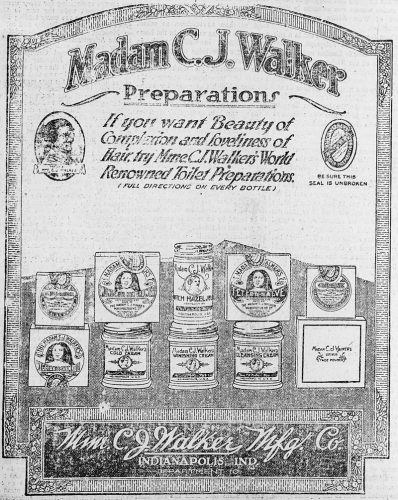It is an excellent time to get caught up on great streaming television. Netflix has launched Self Made: Inspired by the Life of Madam C.J. Walker. The series is based on Madam Walker’s biography On Her Own Ground, which was written by her great grand-daughter and Indianapolis native, A’Lelia Bundles. Self Made explores the life of Madam Walker as she rose from abject poverty in Louisiana, to become a fantastically wealthy entrepreneur (and Hoosier) in the early 20th century.
Born in 1867 as Sarah Breedlove in Delta, Louisiana, Madam C.J. Walker was raised in poverty and then orphaned at the age of 10. She moved in with her sister and became a domestic servant until she married Moses McWilliams in 1882. After McWilliams died in 1887, she moved to St. Louis with her daughter A’Leila and worked as a laundress. Walker married John Davis in 1894, but this marriage failed in 1903. From there, she moved to Denver in 1905. A year later, she married Charles Joseph Walker, after which she became known as Madam C.J. Walker.
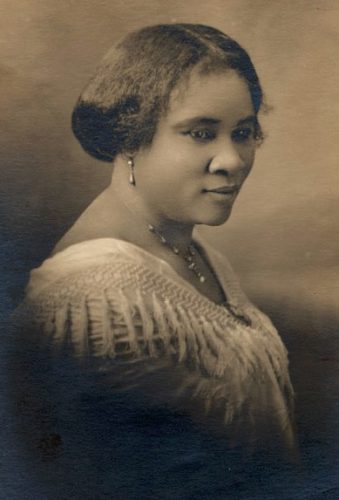 Scurlock Studio (Public Domain).
Scurlock Studio (Public Domain).
During her tenure in St. Louis, Madam Walker launched her career that would end up leading to fame and fortune. At the time, very few companies in the United States produced hair care products for the African-American community, and those that did achieved great success. Annie Turnbo Malone, for instance, was a prominent African American entrepreneur that ran the Poro Company. Walker began selling products for Malone at the 1904 World’s Fair in St. Louis.
 Annie Malone, 1921 (Public Domain).
Annie Malone, 1921 (Public Domain).
After moving to Denver and marrying C.J. Walker, Madam Walker trekked out on her own. She developed a personal line of hair care and other beauty products targeted toward the African American community. Her husband was an advertising specialist and helped expand the business through targeted ads.
 Madam C.J. Walker and friends (Public Domain).
Madam C.J. Walker and friends (Public Domain).
Madam Walker’s business grew, and, with her daughter A’Lelia, she expanded her operations from door-to-door sales to delivering her products around the United States through mail-order. She traveled extensively throughout the south, promoting her products and lecturing on the ‘Walker Method’ of hair care.
In 1908, Madam Walker moved to Pittsburgh and opened a factory to produce her products and launched the Lelia College to train specialists on the ‘Walker Method.’
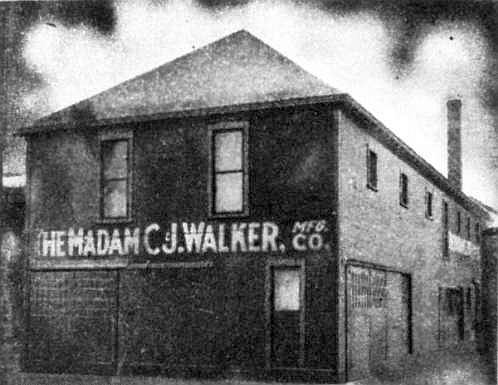 Original Indy factory (Public Domain).
Original Indy factory (Public Domain).
Walker then moved her operations to Indianapolis in 1910, while her daughter A’Lelia opened a second office in Harlem. Walker, according to the Madam Walker Legacy Center, was “drawn by Indianapolis’s thriving black business community and its well-connected transportation network.” In Indy, Walker opened the Madam C.J. Walker Manufacturing Company at 640 North West Street. She also used the facility to train agents on the Walker Method.
During the 1910s, she expanded the business further, employing thousands of women as agents and for work in her factory. Her products were sold throughout the United States and even internationally, especially throughout the Caribbean islands.
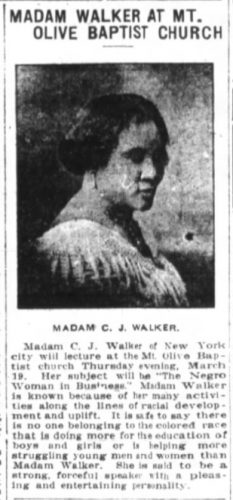 From the Fort Wayne Journal-Gazette, 1918 (Public Domain).
From the Fort Wayne Journal-Gazette, 1918 (Public Domain).
Walker used her fame and fortune for activism, along with providing substantial donations to African American organizations and colleges around the United States. In 1916, she relocated to New York, although operations continued in Indianapolis.
Madam Walker died in May 1919, but her legacy lives on to this day. The Madam Walker Legacy Center says that “by the time she died, she had helped create the role of the 20th century, self-made American businesswoman; established herself as a pioneer of the modern black hair-care and cosmetics industry; and set standards in the African-American community for corporate and community giving.”
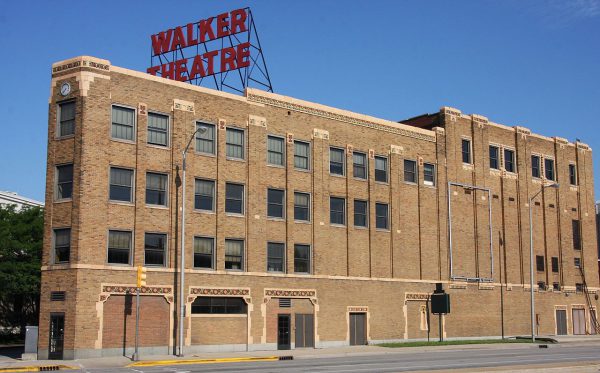 Photo courtesy of Jonathunder, released un the GNU Free Documentation License.
Photo courtesy of Jonathunder, released un the GNU Free Documentation License.
After her death, her daughter A’Lelia ran the company and opened the Madam C.J. Walker Building in 1927. The new facility housed the company’s headquarters and factory. For decades, the building became a center of Indianapolis’s African American cultural community, replete with a drugstore, theatre, beauty salon, restaurant, and ballroom.
The building fell into disrepair by the 1970s, but a concerted effort was made in the late 1970s and 1980s to preserve the structure. Significant restoration efforts, heavily supported by the Lilly Endowment, helped to restore the facility as the Madam Walker Legacy Center. The building was placed on the National Register of Historic Places in 1980.
Walker Theatre Drone Footage 2018 from Madam Walker Legacy Center on Vimeo.
In recent years, a coordinated effort between Indiana University and Indiana University-Purdue University Indianapolis worked to complete further restoration efforts. The facility has been renamed the Madam Walker Legacy Center. The center serves “as an enduring symbol of not only African-American pride and achievement but also pride for women and quite frankly, all citizens of the world by perpetuating the legacy of our nation’s first self-made woman millionaire.”
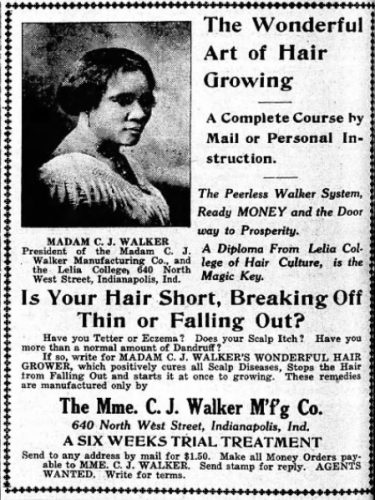 The Bystander, 1918 (Public Domain).
The Bystander, 1918 (Public Domain).
The world is upside down right now, but as the famous adage says, “This too shall pass.” We can look to historical figures like Madam C.J. Walker for inspiration. Walker is a lodestar for the rest of us, someone who overcame tremendous adversity through perseverance, dedication, and sheer grit. While it may take a while for life to return to complete normality, we will be able to travel again, and when we do, make sure to visit the Madam Walker Legacy Center. Until then, enjoy Self-Made on Netflix.
